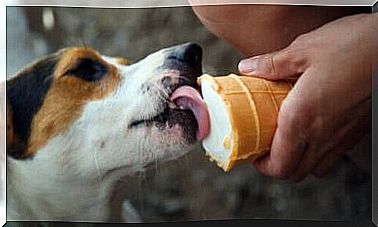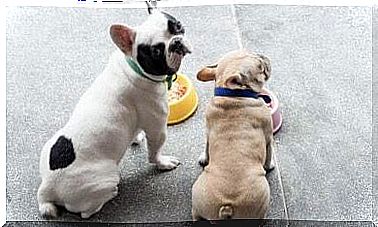What Is The Mastiff Spur For?

In the course of the processes of evolution, bodies adapt, transform and change. Some features, useful for survival, are preserved. Others, on the contrary, disappear. Then there are the so-called vestigial organs, which remain in a kind of limbo, halfway. An example is the mastiff spur.
It is a similar speech to the coccyx of human beings. It stays where it is but is absolutely useless. Well, in this article we will talk about the strange anomaly represented by the mastiff spur . It almost looks like they have a thumb!
What is the mastiff spur?
Few people know that dogs had thumbs, but they were “discarded” in the course of their evolution. The mastiff spur, historically described as “dew claw” or “dew paw”, is a superfluous appendage that these dogs still keep today.
Each domestic dog paw has four primary toes. If you have a Mastiff, you may have noticed that it has a fifth toe on its front legs. It occupies the same typical position as the human thumb. This is why these spurs are often referred to as “dog thumbs”.
They are most noticeable when the animal walks or plays and the spurs of the foreleg do not touch the ground. But then: what are they for?

Does the mastiff spur serve any purpose?
This vestigial organ has several functions, albeit minor ones, including that of ensuring balance and stability when dogs move on uneven ground or return to land after swimming.
The front spur gives the Mastiff some assistance and control when grooming itself, particularly by passing the paw over the head and muzzle. He also makes good use of it when he gnaws at a bone with satisfaction or bites his favorite toy.
What role do the hind spurs play?
When it comes to the mastiff spur, most people probably think of that little claw that hangs from a dog’s paw.
Well, the rear spurs are clear evidence of the changes generated by evolution. All mastiffs possess spurs in the front. On the contrary, however, most of the hind spurs are simply genetic anomalies.
While the front ones have their own functionality, even if limited, the spurs of the hind legs are of no use.
If present, they tend to appear at some distance from the hind leg. They are joined by nothing more than a small flap of skin, with no other attachment to the leg, neither by ligaments nor bones.
Mastiffs with double spurs
Strange as it may seem, there are even mastiffs that are born with functional double spurs on both hind legs. In some varieties, this anomaly is an aesthetic requirement for the breed.

There are other dog breeds that occasionally feature double spurs. For example, this is the case of the Anatolian Shepherd Dog, the Australian Shepherd and the Icelandic Shepherd… What is the common point? All of these dogs are large in size and use the double spur to walk better on difficult terrain.
Eliminate the posterior spur
Like the tailbone and appendix in humans, the mastiff spur becomes prominent when it breaks. The rear ones, not having a real substantial connection with the body, in most of the specimens, can cause unpleasant accidents. As in the case of cuts or tears, with a copious flow of blood.
For this reason, some owners choose to have it surgically removed. Removing the spur of the mastiffs when the animal is a puppy eliminates any risk of injury in the future.
The extraction of the mastiff spur is simple, although it is not medically necessary. During the puppy’s first visit to the vet, spur removal surgery may be performed.
At this early stage, pain is minimized and recovery times are faster. Early posterior spur surgery is preferable to surgery when dogs are already adults, as the operation would be more painful (and expensive).









